B2B procurement involves several activities, including sourcing materials, negotiating terms, and completing transactions. Unlike B2C purchasing, which focuses on consumer products, B2B procurement targets raw materials, manufacturing components, and services essential for business operations. Moreover, B2B Industries can lead to significant savings, improved quality, and enhanced innovation in work processes.
By leveraging technology and data, businesses can make faster and more transparent decisions while reducing risk exposure. Whether for small businesses or large corporations, focusing on effective procurement strategies fosters growth and sustainability. Ultimately, B2B procurement is not just a transactional process; it emphasizes building partnerships that create value for both parties involved.
What Is B2B Procurement?
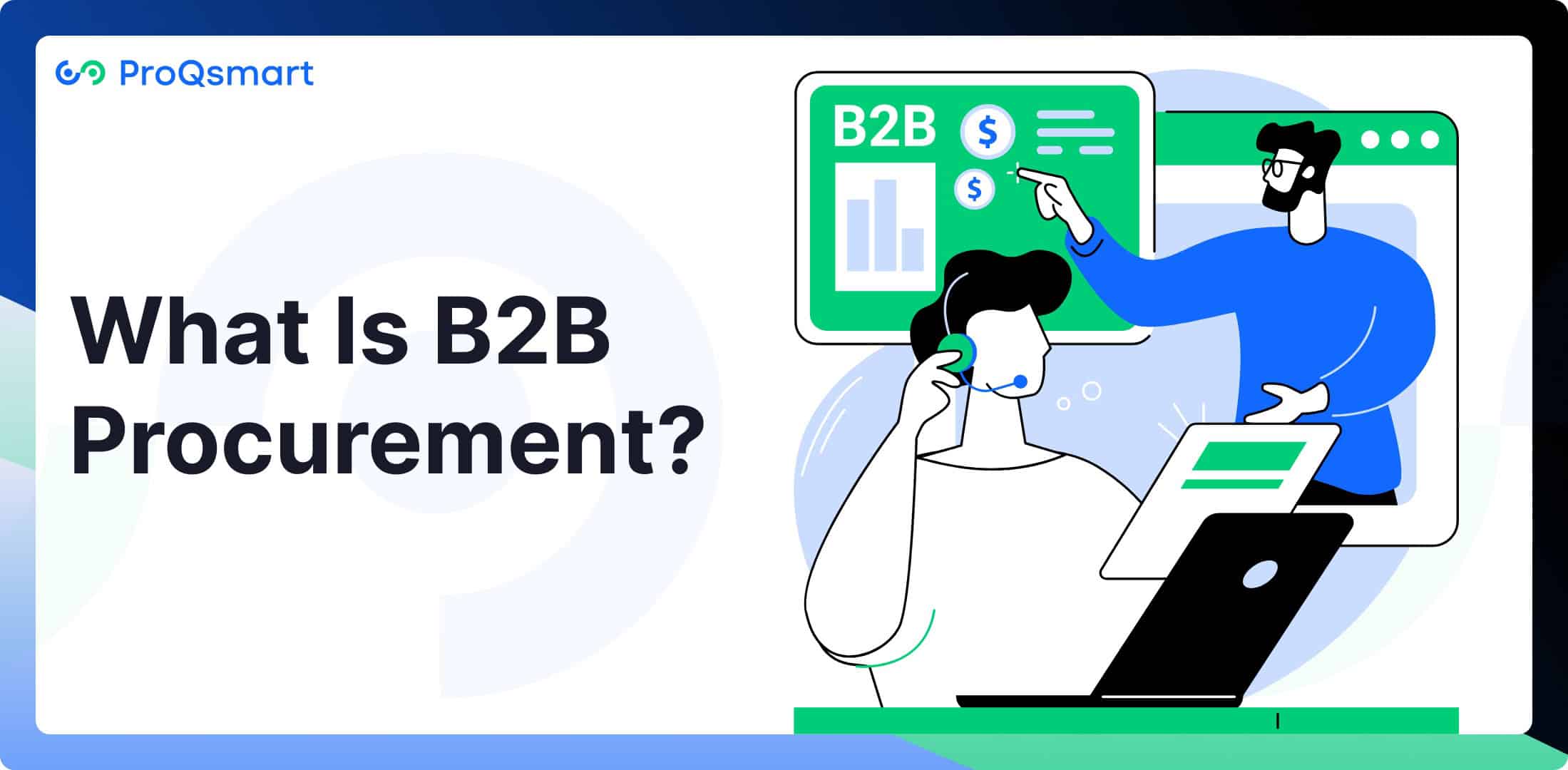
B2B procurement is the process through which one business purchases goods, services, or raw materials from another business. It requires a second layer of stakeholder management, at a minimum, involving suppliers, buyers, and procurement teams, all working together to ensure smooth transactions.
In contrast to less complicated consumer transactions, B2B procurement often takes much more advanced planning and coordination to fulfill organizational needs efficiently and ethically. The procurement process includes a number of activities, including
Sourcing suppliers
Vendor evaluation
Purchasing
When a manufacturing company is looking to procure raw materials such as steel or machinery, this process involves careful vendor vetting and contract negotiations. Knowing procurement-specific terminology helps you communicate clearly among your team, a crucial step in preventing costly mistakes and hold-ups.
The best B2B procurement strategies go beyond saving money to create a direct, measurable impact on business goals. By considering factors like cost, quality, and delivery timelines, businesses can ensure that their procurement efforts support overall operational goals.
Differences Between B2B and B2C Procurement
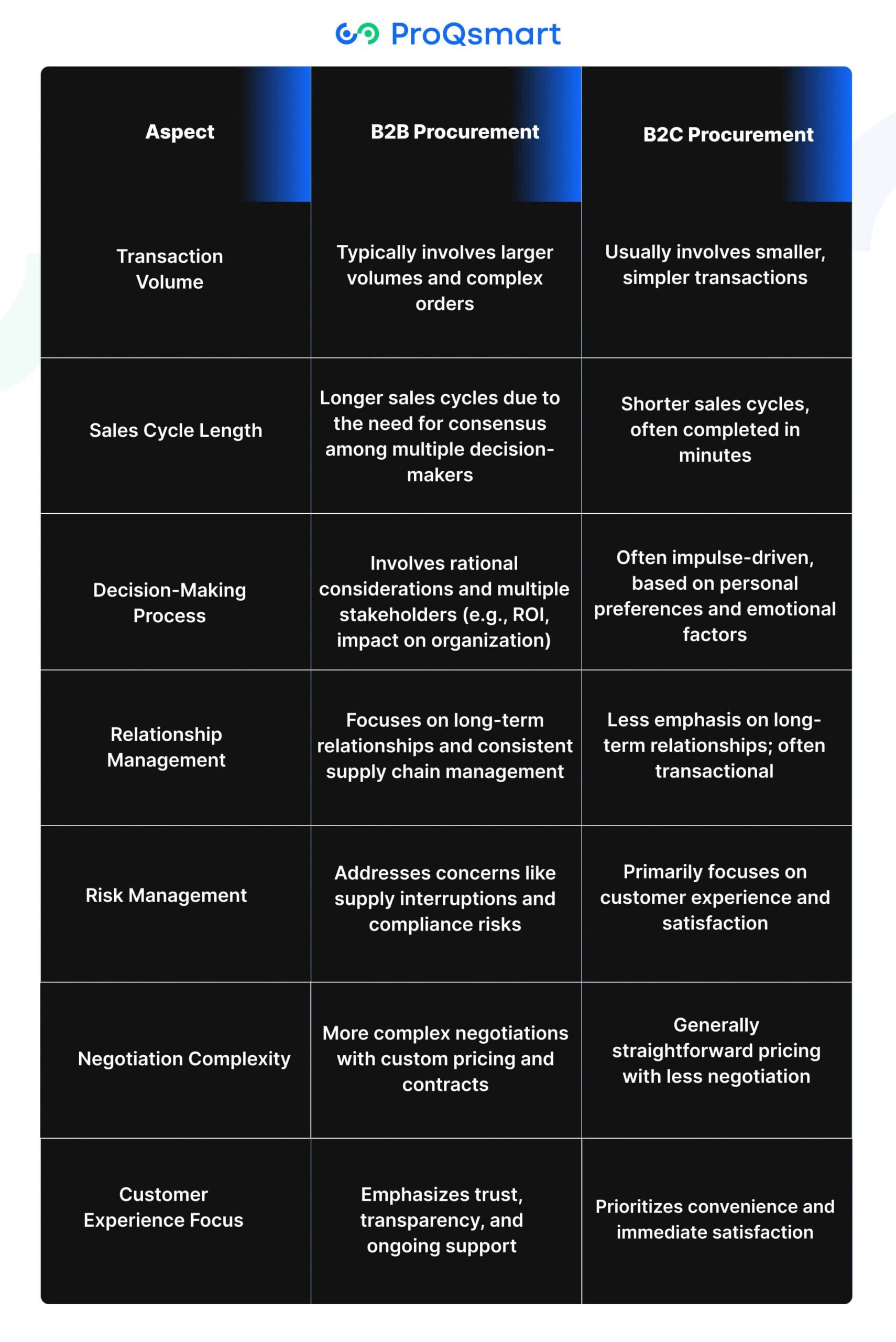
Aspect | B2B Procurement | B2C Procurement |
Transaction Volume | Typically involves larger volumes and complex orders | Usually involves smaller, simpler transactions |
Sales Cycle Length | Longer sales cycles due to the need for consensus among multiple decision-makers | Shorter sales cycles, often completed in minutes |
Decision-Making Process | Involves rational considerations and multiple stakeholders (e.g., ROI, impact on organization) | Often impulse-driven, based on personal preferences and emotional factors |
Relationship Management | Focuses on long-term relationships and consistent supply chain management | Less emphasis on long-term relationships; often transactional |
Risk Management | Addresses concerns like supply interruptions and compliance risks | Primarily focuses on customer experience and satisfaction |
Negotiation Complexity | More complex negotiations with custom pricing and contracts | Generally straightforward pricing with less negotiation |
Customer Experience Focus | Emphasizes trust, transparency, and ongoing support | Prioritizes convenience and immediate satisfaction |
Key Components of B2B Procurement
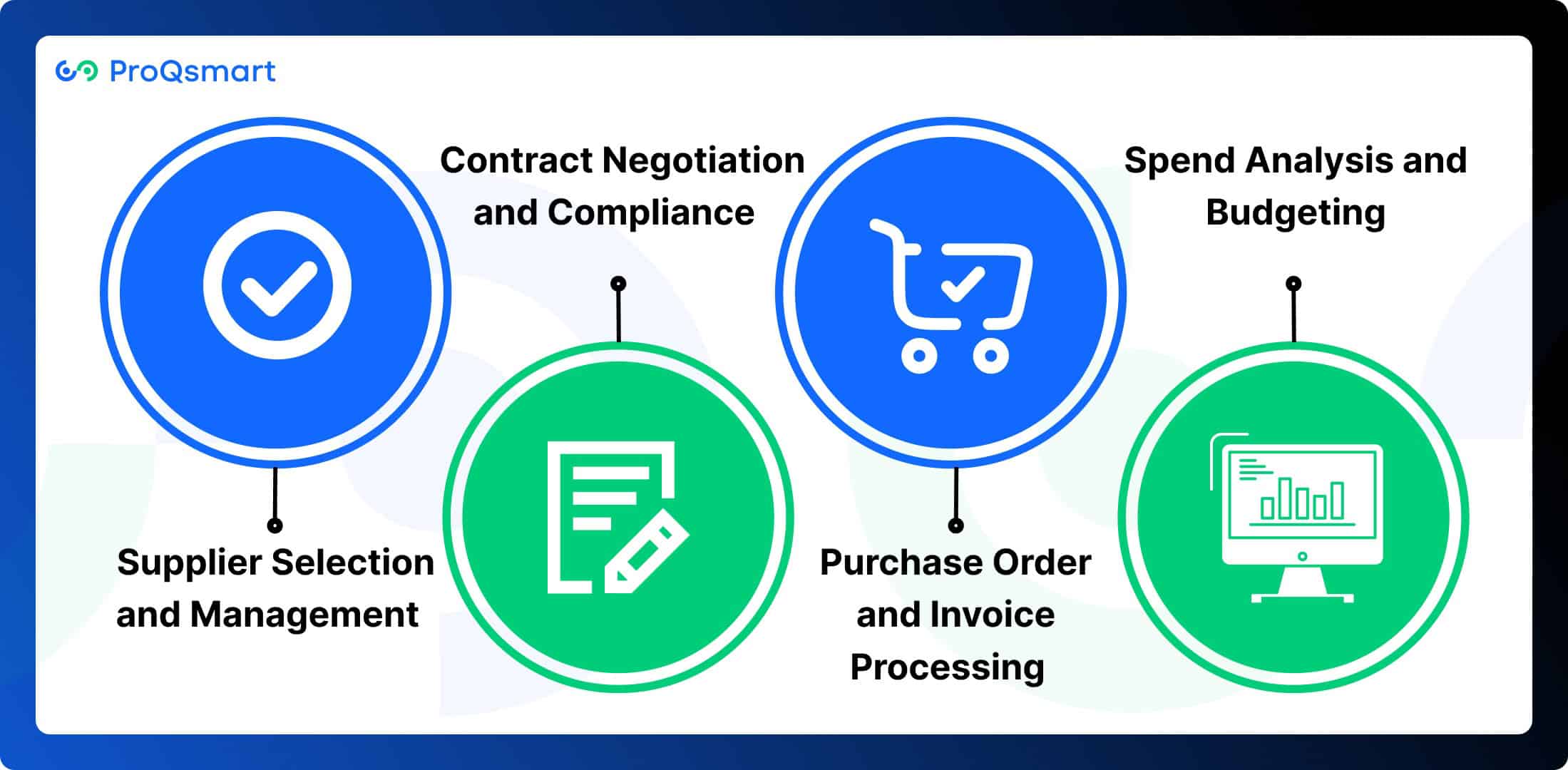
Supplier Selection and Management
Supplier selection forms the backbone of B2B procurement. This process involves identifying potential suppliers, evaluating their capabilities, and shortlisting those who align with organizational needs.
Performance metrics, such as on-time delivery rates and defect ratios, provide measurable insights into their dependability. Long-term supplier relationships thrive on mutual trust and collaboration. Regular communication, performance reviews, and feedback sessions strengthen these partnerships while ensuring alignment with business goals.
Effective supplier management minimizes risks, such as supply chain disruptions, by fostering stability and adaptability. For instance, during unexpected demand surges, a trusted supplier can prioritize your needs.
Contract Negotiation and Compliance
Smartly negotiated contracts enable both the public and private sectors to walk away with a mutually beneficial result. Key elements are clear definitions of terms, pricing, and SLAs (service-level agreements). By structuring these terms, compliance guarantees accountability and lessens the potential for disputes.
Powerful strategies such as collaborative bargaining not only produce win-win outcomes but build stronger relationships. Continuous oversight of compliance is key.
Procurement software such as ProQsmart make this process easy, offering up-to-the-minute status updates and minimizing human error.
Purchase Order and Invoice Processing
Receiving accurate purchase orders (POs) and invoices enhances the buyer and supplier procurement workflow and reduces administrative delays. Developing POs requires defining product quantities, costs, and delivery timeframes to set vendor expectations. Technology helps automate these processes, alleviating bottlenecks and increasing accuracy.
For instance, with automated invoice matching removing discrepancies before payment, businesses can further improve cash flow management. Having open lines of communication between procurement and finance teams builds trust and fosters transparency.
Spend Analysis and Budgeting
Spend analysis examines procurement data to uncover cost-saving opportunities. Categorizing expenses, such as recurring supplier costs, identifies inefficiencies. Budgeting aligns spending with financial goals while data-driven insights inform strategic decisions.
Benefits of Effective B2B Procurement
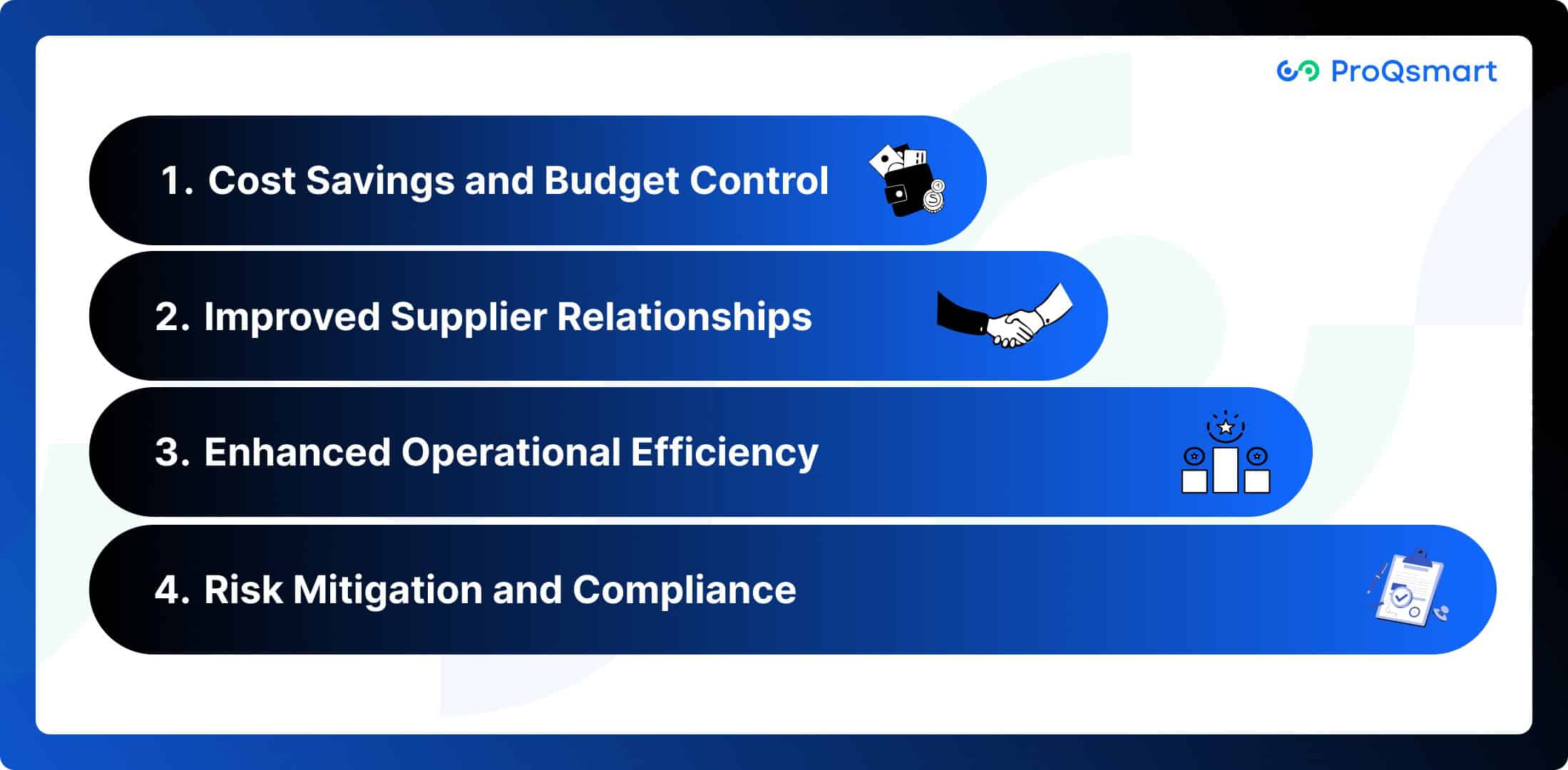
Cost Savings and Budget Control
Measurable cost savings effective B2B procurement can deliver concrete cost savings through the use of strategic sourcing and supplier negotiations. By understanding market dynamics and using the power of group purchasing, companies can obtain more competitive pricing and favorable terms.
This is where budget control is key, making sure procurement expenditures match the company’s fiscal priorities. Procurement management software provides instant visibility into all spending. This leads to improved budget adherence and reduced risk of going over budget.
Regular cost reviews dig deeper to reveal additional areas of potential savings, like spotting redundant spend or needs for reprioritize through alternative sourcing. This is because those cost savings increase profitability. Most importantly, they allow us to reallocate our capital to invest in growth initiatives, like product development and expanding into new markets.
Improved Supplier Relationships
Strong supplier relationships are an often-overlooked cornerstone of successful procurement. Establishing trust and collaboration with suppliers encourages them to be more reliable and perform better.
Clear lines of communication, through regular check-ins and feedback loops, keep everyone aligned on expectations and goals. Supplier feedback is invaluable, providing unique insight that can help the government make further process improvements to produce even better outcomes.
Long-term relationships with strategic suppliers provide better uniformity of quality and priority treatment in service. These collaborations are good for shared innovations, which in turn makes your business’s supply chain and market position more resilient and competitive.
Enhanced Operational Efficiency
More efficient procurement procedures make things easier across the board, eliminating the duplication of effort or excess steps. Automation tools help eliminate time-consuming manual tasks such as invoice matching, freeing up operations teams to work faster and make fewer mistakes.
Aligning procurement strategies with broader operational goals can help create more resilient supply chains, reducing the chance of delays and disruptions. Direct customer benefits Efficiency gains contribute to improved customer experience, with on-time and dependable deliveries serving as an indicator of high service quality.
Procurement software like ProQsmart, speed up approvals and connect relevant data in one place for faster, smarter decisions—driving even more operational performance.
Risk Mitigation and Compliance
In B2B procurement, risk mitigation starts with understanding vulnerabilities such as supplier insolvency or changes in regulation. Once these risks are identified, you can create targeted strategies to address them.
When they don’t, they expose their business to legal liability, penalties and reputational damage. Routine audits paired with compliance-focused digital tools make tracking compliance easier, and continued training helps procurement teams remain up to date with changing regulations.
Comprehensive risk management safeguards operations, maintaining stability and resilience against disruptions.
Strategies for Optimizing Procurement Processes
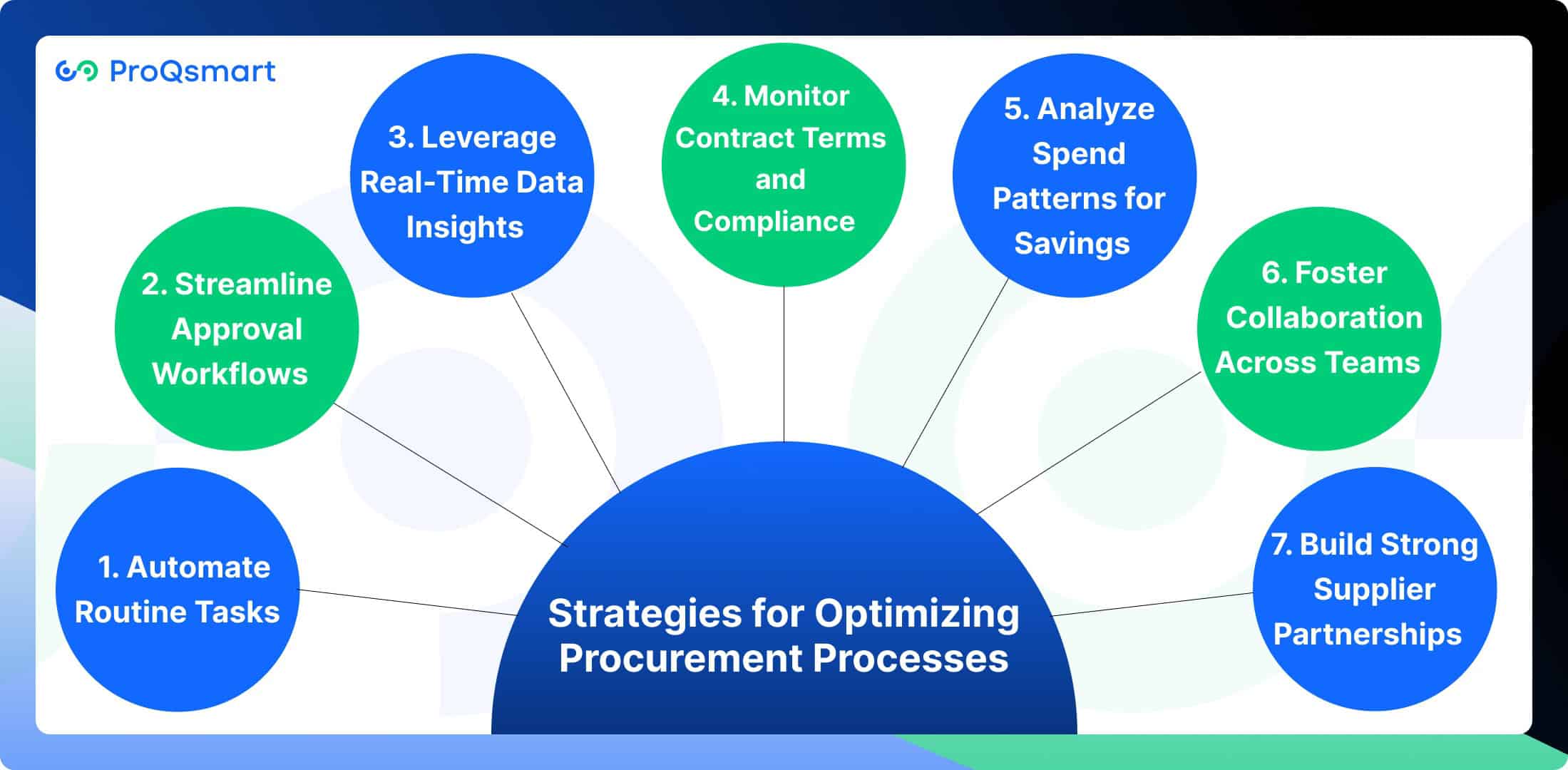
1. Automate Routine Tasks
Automation truly is a game-changer for procurement efficiency. By automating routine tasks like purchase order creation and invoice processing, teams can free up time for more strategic activities. For example, by just automating purchase order approvals, an organization can cut errors by 82 percent and save 20 hours per week on average.
Further, technology mitigates human error in data entry, reducing the chance of discrepancies that result in expensive rework. Choosing solutions like e-procurement platforms like ProQsmart that link directly to ERP systems reduces duplication of effort and rework between departments. Time and money saved with automation are just the beginning of the benefits. It improves compliance and reduces manual operation risks.
2. Streamline Approval Workflows
Defined, tiered approval workflows are key to eliminating these chokepoints. Assigning roles and responsibilities for approvals creates accountability, while technology solutions such as workflow management software streamline the overall approval process.
For instance, automated notifications keep the appropriate stakeholders in the loop and prevent time lost to manual check-ins. Consistently reviewing workflows is critical to creating and managing changes in your organization, while ensuring your team stays in the loop with improved processes.
3. Leverage Real-Time Data Insights
Access to real-time data empowers procurement teams to make informed decisions. Analytics tools can help companies find spending trends, highlight high-value suppliers, and figure out how best to source them.
For example, analyzing aggregated monthly procurement data in the construction industry can reveal missed opportunities for bulk-purchasing discounts on materials. Teams with strong data literacy can use these insights to achieve cost savings and improve efficiency in project execution.
4. Monitor Contract Terms and Compliance
Sound contract management minimizes disputes and holds suppliers accountable. By being able to track KPIs like delivery time and payment length, procurement teams can quickly identify and rectify any occurring problems.
Proactive monitoring strengthens compliance while fostering transparency with suppliers, ultimately enhancing partnerships.
5. Analyze Spend Patterns for Savings
Grouping expenditures by department or project gives a better picture on how money is being spent. Frequent reviews allow you to catch costs that don’t need to be there or areas where you can negotiate.
For example, bundling the same purchases with a smaller number of suppliers usually results in volume discounts, cutting savings right to the bottom line.
6. Foster Collaboration Across Teams
Improved cross-functional collaboration helps procurement be more effective and better serve the organization’s overall business goals. Promoting cross-departmental collaboration, such as with finance and operations, creates common goals and more efficient processes.
Collaboration can lead to new ideas too, like when companies work together to find sustainable sourcing alternatives.
7. Build Strong Supplier Partnerships
Solid relationships with your suppliers are key to long-term success. Ongoing conversations, trust-building exercises, and performance evaluations create a culture of accountability and shared success.
For instance, when market conditions become challenging, suppliers who feel valued will be more motivated to meet your manufacturing needs—ensuring continuity and support when you need it most. This strong relationship can be crucial for maintaining production schedules and quality standards during difficult times.
Role of Technology in Procurement
Technology has introduced a paradigm shift in today’s procurement world, streamlining processes and increasing transparency and strategic value. In today’s business landscape, where efficiency is critical, digital tools and innovations provide procurement teams with the resources to navigate complex supplier networks, optimize costs, and ensure compliance.
Technology not only automates time-consuming routine tasks but allows for real-time collaboration with suppliers. This enhances operational performance and fuels long-term, sustainable growth.
Importance of Digital Procurement Tools
Digital procurement tools make the sourcing, purchasing, and managing of suppliers more efficient in B2B Industry by digitizing workflows and cutting down on the need for manual processes. For instance, e-procurement platforms like ProQsmart make it easier to select suppliers and manage contracts to accelerate approvals and payments.
An intuitive user experience allows all members of the procurement team, both technical and non-technical, to use these tools effectively, improving communication and collaboration. Thanks to cloud-based applications, businesses can be more agile to meet new demands and more able to connect with third-party systems.
Continuous training and support are needed to ensure that teams can make the best use of such tools.
Benefits of Automation in Procurement
Automating many repetitive procurement tasks lowers administrative burdens and frees up teams to spend more time on the strategic work. Automation dramatically improves major processes like purchase order creation, invoice processing and compliance tracking.
This change results in significant time savings and greater accuracy. Organizations can make significant improvements in procurement performance simply by choosing the right automation tools for their needs.
These tools reduce errors, remove redundancies, and greatly increase efficiency.
How Data Analysis Transforms Procurement
Data analysis gives procurement teams more power to base decisions on real data, most importantly in supplier evaluation and cost control. Tools such as predictive analytics help identify trends, optimize budgets, and reveal opportunities for cost-savings.
Mastering the art of data analysis allows teams to drive more powerful results, such as enhanced supplier engagement and increased ROI.
Choosing the Right Procurement Software
Choosing the right b2b procurement platform involves weighing various considerations such as scalability, flexibility, and alignment with business objectives. For example, cloud-based solutions offer flexibility combined with intuitive user design and robust customer support services, which provide the necessary training and onboarding to ensure easy adoption. When paired with the right procurement software like ProQsmart, procurement efficiency can be drastically improved. ProQsmart is designed to streamline the b2b purchasing process, allowing organizations to grow strategically and sustainably.
Moreover, it offers solutions such as:
E-Sourcing
Supplier relationship management
Spend analytics
CapEx management
Collaboration and workflow management and many more.
Future Trends in B2B Procurement
Below, let’s take a look at the major trends in b2b procurement platforms determining its future.
Adoption of Artificial Intelligence in Procurement
Artificial intelligence (AI) is revolutionizing the b2b procurement process by streamlining processes from supplier selection to contract management. AI analyzes supplier performance metrics to identify optimal vendors based on cost, quality, and delivery. It also simplifies spend analysis and enables predictive analytics, helping businesses forecast demand and manage inventory effectively. Companies that embrace AI can operate more efficiently, reduce errors, and achieve significant cost savings through modern procurement platforms.
Growth of Sustainable Procurement Practices
Sustainability is becoming essential in procurement, particularly within modern procurement platforms. Businesses are prioritizing ethical sourcing and waste reduction while collaborating with multiple vendors to meet these goals, ultimately enhancing brand reputation and driving long-term economic returns.
The Role of ProQsmart
ProQsmart supports these trends by providing tools for AI integration and sustainable procurement practices within a robust B2B procurement platform. With features for supplier management and predictive analytics, ProQsmart helps organizations enhance efficiency while aligning with sustainability goals in the evolving B2B sourcing landscape.
Conclusion
The future of B2B procurement is promising, driven by trends like automation and sustainability that are reshaping how organizations operate. By focusing on strategic thinking, transparency, and accountability, businesses can enhance productivity and achieve significant cost savings. Building productive supplier relationships through data-driven risk management ensures that teams are prepared to tackle challenges effectively while delivering impactful results.
To stay competitive, companies must embrace these changes and prioritize being easy to work with. Even small improvements in procurement strategies can lead to substantial savings, whether through streamlining workflows or discovering innovative solutions.
Now is the time to advocate for a smarter, simpler, and more sustainable procurement approach. By leveraging tools like ProQsmart, organizations can enhance their procurement processes, making them more efficient and aligned with sustainability goals. Investing in effective procurement strategies is not just beneficial; it’s essential for long-term profitability and success. Book a Demo Today!



